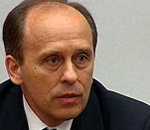
Adygeya: the New North Caucasus Hot Spot?
Publication: Eurasia Daily Monitor Volume: 6 Issue: 182
By:

With the Adygeya jamaat announcing their intent to swear loyalty to Dokka Umarov, the chain of regional underground resistance groups has been completed and now spans the North Caucasus continuously from the shores of the Caspian to the Black Sea. The announcement came after years of persistent doubts about whether the Adygeya group even existed.
The idea of establishing an insurgency unit in Adygeya was first voiced by Shamil Basaev during his “field audit” tour of the North Caucasus four years ago, in early 2005 (www.kp.ru, March 21, 2005). During the next few years, many opined that the group may indeed exist, but nothing was heard of its activities. In the wake of the Nalchik events in October 2005, some analysts believed that the Adygeya group may become the next regional hotspot (The Jamestown Foundation conference, “Sadullaev’s Caucasian Front: Prospects for the Next Nalchik,” April 14, 2006). For a variety of reasons, that prediction did not come true, not least due to the assassinations of the rebel leaders Abdulhalim Sadullaev (on June 17, 2006) and Shamil Basaev (on July 10, 2006). The subsequent restructuring of the entire resistance movement resulted in some fragmentation and losses among the jamaats (mostly for Karachai and Nogai Steppe groups).
The first reports of the Adygeya jamaat surfaced when the Interior Ministry and Federal Security Service (FSB) departments in Krasnodar Krai announced the arrest of Asker Setov (aka Emir Abdel Wahab), who the government said was the leader of the jamaat –a peculiar statement, considering that all this time the government was doing its utmost to deny the existence of the group (www.segodnia.ru, August 17). Setov was captured on October 9, 2008 during a document check at a checkpoint in Krasnodar. During a failed attempt to escape he opened fire, killing one and wounding three interior troops. The local government touted Setov’s arrest and sentencing in August 2009 as having nipped the Adygeya jamaat in the bud. Meanwhile, the mufti of Adygeya and Krasnodar Krai, Nurbi Emizh, claimed that, in his view, there was no presence of Wahhabism or other extremist strains of Islam in Adygeya (www.rosbalt.ru, October 13, 2008). Emizh added that Setov’s action were purely criminal, with no religious motivation to speak of.
However, the only kernel of truth in the mufti’s statement was that Asker Setov should not be called the leader of the Adygeya jamaat based on the strength of police announcements alone. It is a longstanding tradition with the police and FSB, dating back to the Chechen war in 1999, that all arrested and killed insurgency fighters must necessarily have the rank of a leader in order to make the police operation look especially meaningful. At the time, the interior ministry claimed that the police operation discovered rebel bases with ammunition and provisions (www.kavkazcenter, January 23). In its own way, the government acknowledged that the hunted group was a well-established unit with its own bases in Adygeya’s mountains.
According to the FSB Director Alexander Bortnikov, since January 2008 through September of the same year (i.e. the date of Asker Setov’s arrest), his agency pre-empted 69 terrorist attacks alone, including the planned strikes in Sochi and Anapa (https://www.kavkaz-uzel.ru/articles/142862/). Obviously, the perpetrators were not isolated individuals but rather an organized group that focused its efforts on undermining Sochi’s Olympic dreams.
Less than a month after Asker Setov’s trial, the Adygeya group known as Jamaat al-Gharb addressed Adygeya’s Muslims through the websites maintained by supporters of the insurgency. The group announced its decision to swear an oath of loyalty to the Emir of the Caucasus Emirate Dokka Umarov and become an integral part of resistance against Russia in the North Caucasus (www.kavkazcenter.com, September 23). If this statement is not just a propaganda move on the part of the rebel group, it will certainly tilt the balance of power in the region in favor of the resistance movement. What makes this region particularly sensitive is its proximity to the site of the 2014 Sochi Olympic Winter Games.
Finally, recent reports from Adygeya drew attention to the violence against the Russian residents of the republic. Russians comprise over 60 percent of the population in this small North Caucasus enclave while ethnic Adygs, commonly referred to as Circassians, make up only 26 percent of the total. The latter’s minority status thus becomes an additional challenge in their path toward strengthening their ancestral homeland.
On August 4, unidentified perpetrators sawed off and threw away an Orthodox cross mounted on one of the highest points in Adygeya, the Fisht Mountain. On August 11, yet another desecrated metal cross was seen near the highway entrance into the city of Maikop (www.regnum.ru, September 16). Local Muslims disapprove of Christian monuments erected in their ancestral homeland. The director of Adygeya’s Slavs’ Union NGO, Nina Konovalova, believes that desecration of Christian memorials was not perpetrated by mere vandals. She said she is certain that these were the acts of people who want to destabilize the situation in the region (www.regnum.ru, September 16).
These events, however, are not rooted in inter-faith tensions. The real reasons can be traced back to the nineteenth century, when Circassian lands were colonized by the Russian Empire. Both sides of the conflict have their own vision of a solution. The ongoing national conscience revival, spurred with the assistance of the expatriate Circassian community, 5-7 million of whom live in neighboring Turkey, may mean that the nationalistic and Islamic sentiments are likely to become the main weapons in the arsenal of ethnic Adygs seeking to apply pressure on non-Adyg residents of the republic.
The combination of these factors may indicate that a new hotspot in the North Caucasus could be on the verge of erupting. An additional external factor may come from a radical change of policy by the Georgian leadership: while two years ago President Mikheil Saakashvili considered himself above contacts with his North Caucasus neighbors, today he seems to be keen on establishing close relationships with the same. In time, the region may well seek to replace its alliance with Russia in the north with a new southerly focus on Georgia.




